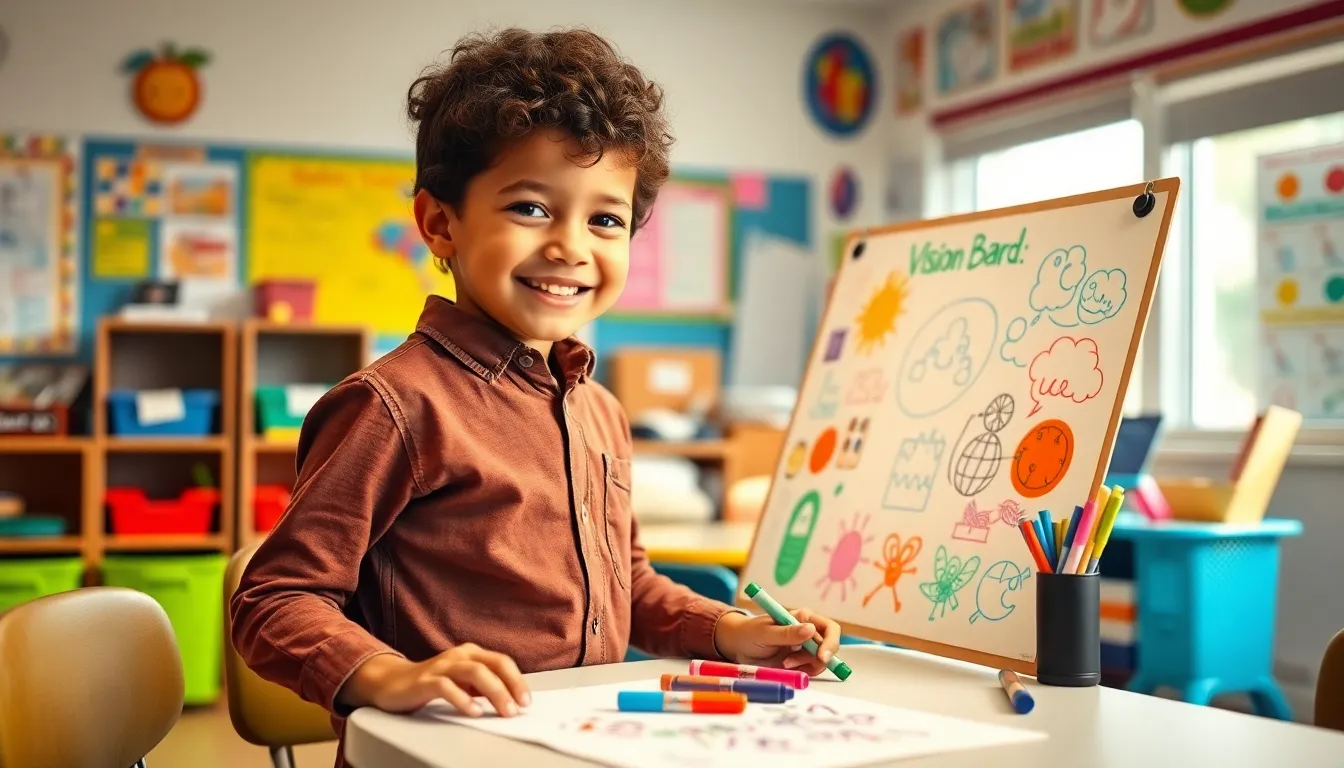Table of Contents
ToggleSetting goals isn’t just for adults in stuffy boardrooms; kids can join the fun too! Imagine a world where children tackle challenges with the same enthusiasm they have for ice cream and video games. With the right goal-setting techniques, kids can learn to dream big while developing essential life skills.
Understanding Goal-Setting Techniques For Kids
Effective goal-setting techniques inspire children to take charge of their aspirations. One well-known method involves the SMART criteria, which stands for Specific, Measurable, Achievable, Relevant, and Time-bound. Specific goals remove ambiguity; for instance, instead of saying “I want to read more,” children might state, “I will read three books this month.”
Another technique is the use of visualization. Children can picture their goals in vivid detail, allowing them to mentally rehearse success. This empowers their motivation and enhances focus.
Additionally, breaking down larger goals into smaller, achievable tasks aids in managing progress. For example, a child aiming to improve their math skills might set sub-goals, such as completing five practice problems each week. Smaller tasks make larger goals less overwhelming.
Incorporating rewards into the process often boosts enthusiasm. Children respond well to incentives, whether it’s a sticker for each completed task or a special treat after achieving a significant milestone. Rewards provide positive reinforcement that encourages continued effort.
Social accountability strengthens commitment to goals. When children share their objectives with friends or family, it creates a support system that fosters motivation. Encouragement from others can help maintain focus during challenging times.
Tracking progress visually, such as through charts or journals, allows children to see their accomplishments. A progress chart can motivate them to work harder and remain engaged. Regular check-ins also contribute to understanding how far they have come toward achieving their goals.
Using these techniques not only makes goal-setting enjoyable for children, but also cultivates essential skills. Achieving goals teaches resilience and discipline, setting a foundation for future success.
Benefits Of Goal-Setting For Kids

Goal-setting for kids leads to numerous benefits that enhance their growth and development both personally and academically.
Enhanced Focus And Motivation
Improved focus often results from clear and defined goals. Children who set goals tend to concentrate better, understanding what they aim to achieve. Motivation increases significantly when kids can visualize their progress. Engaging with goal-setting creates a sense of purpose that drives them forward. Research indicates that kids who actively participate in goal-setting report higher levels of commitment to their tasks. This sense of ownership reinforces their attachment to the goals they set. Achieving smaller milestones keeps excitement alive, making the overall process enjoyable.
Development Of Life Skills
Goal-setting promotes critical life skills essential for success. Kids learn to organize their time better, prioritizing tasks effectively. When they break larger goals into manageable steps, they develop problem-solving abilities. This technique enhances their resilience, allowing them to overcome obstacles without feeling discouraged. Social skills also improve since collaboration with peers often takes place during goal-setting activities. Accountability becomes a key lesson, teaching them to take responsibility for their actions. Additionally, tracking their progress visually instills a sense of achievement, fostering confidence in their capabilities.
Popular Goal-Setting Techniques
Children can benefit from several effective goal-setting techniques. These methods enhance engagement and facilitate skill development.
SMART Goals
SMART goals focus on specific, measurable, achievable, relevant, and time-bound objectives. For instance, a child might set a goal to read five books in one month. This definition clarifies expectations and measurable outcomes. They identify what they want to achieve, making the process clearer. Setting a timeframe creates urgency and aids focus. With each component in place, kids gain a structured approach that increases their chances of success.
Visualization Techniques
Visualization techniques encourage children to imagine their goals vividly. When a child visualizes an outcome, they strengthen motivation and commitment. Creating a vision board serves as a helpful tool; it can include images, quotes, and drawings representing aspirations. These visual aids help maintain enthusiasm and reinforce purpose. Encouraging kids to picture each step promotes engagement in the entire process. Fostering this imaginative practice enriches their goal-setting experience.
Reward Systems
Reward systems can significantly boost motivation for children. Establishing rewards for achieving smaller milestones reinforces positive behavior. A child might receive extra screen time or a small treat after completing a task. These incentives create excitement and serve as recognition for hard work. Establishing clear rewards aligns children’s efforts with desired outcomes. As they experience success, their self-esteem and commitment to future goals increase.
Tips For Parents And Educators
Supporting children in their goal-setting journey enhances motivation and engagement. Parents and educators play a crucial role in guiding this process.
Encouraging Autonomy
Fostering independence allows kids to take ownership of their goals. Letting them choose their objectives promotes confidence and decision-making skills. Provide opportunities for self-reflection, helping them identify their interests and values. Encourage children to evaluate their aspirations, making adjustments when necessary. Celebrate their choices, reinforcing the importance of autonomy in their learning journey. By trusting kids to set their goals, parents and educators instill a sense of responsibility and commitment to achieving them.
Setting Realistic Expectations
Establishing achievable goals keeps children motivated and engaged. Emphasizing the importance of realistic timelines and outcomes helps them grasp the process. Break larger objectives into smaller, manageable tasks. This method allows kids to see progress, fostering a sense of accomplishment. Discuss potential challenges they might face, prepping them to navigate obstacles effectively. While aiming high is important, recognizing limitations leads to balanced goal-setting practices. Supporting children in understanding their capabilities and pacing ensures continuous growth and motivation.
Goal-setting for kids is more than just a fun activity; it’s a vital tool for personal development. By using techniques like SMART goals visualization and reward systems children can cultivate essential skills that serve them well throughout life. Parents and educators play a crucial role in this journey by providing support and encouragement.
As kids learn to set and achieve their goals they develop focus resilience and a sense of accountability. This process not only boosts their confidence but also prepares them for future challenges. Embracing goal-setting can transform aspirations into accomplishments making it an invaluable practice for every child.





